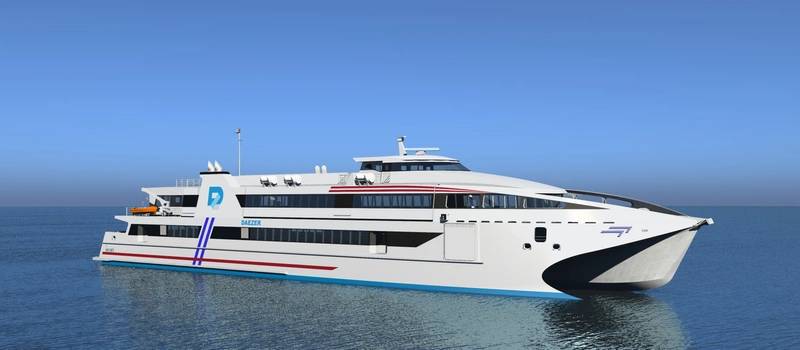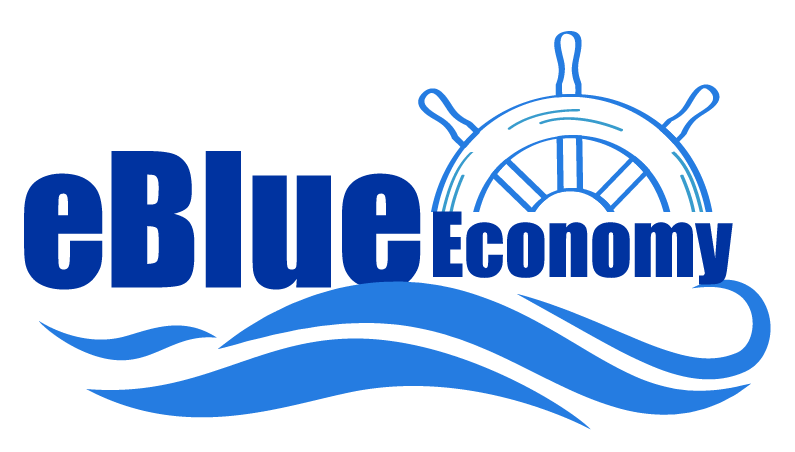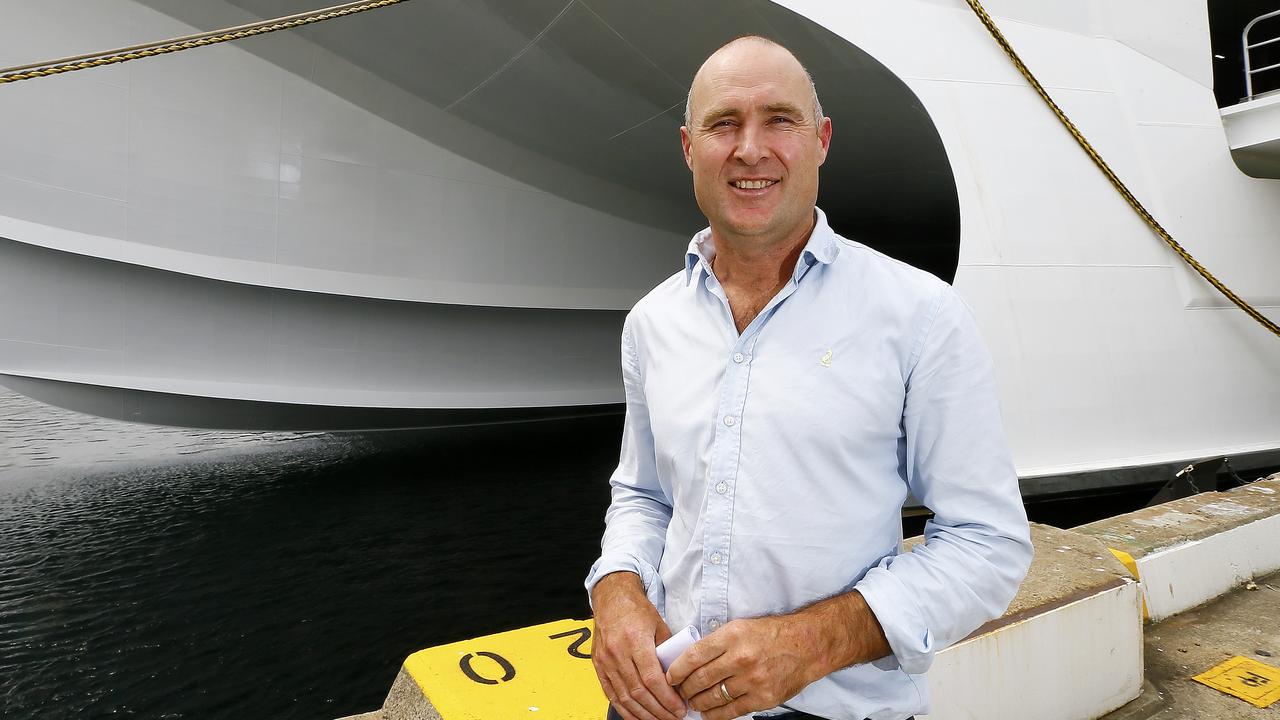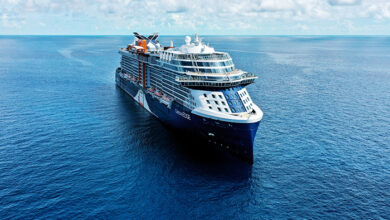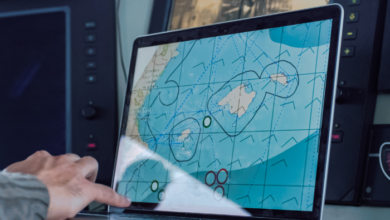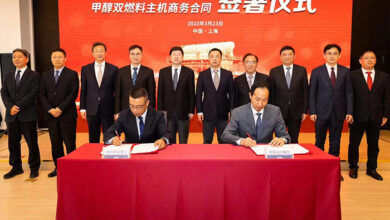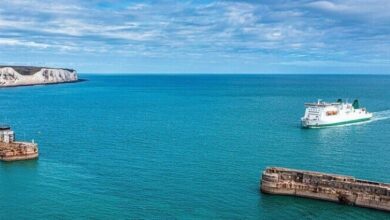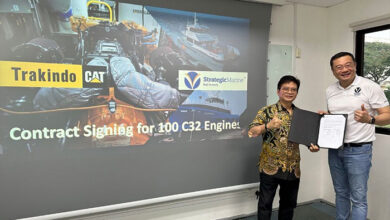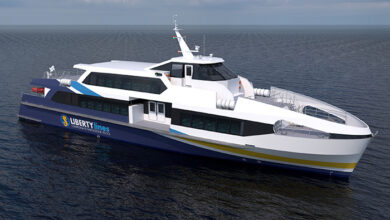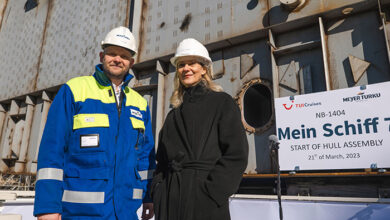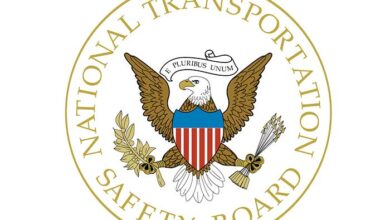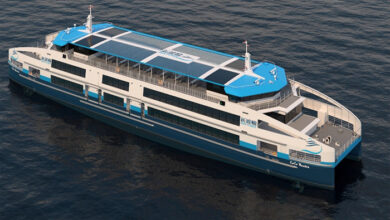Wärtsilä to supply components for high-speed dual-fuel catamaran ferry

Technology group Wärtsilä will supply a wide range of equipment for a new high-speed catamaran ferry set to be built at the Incat yard in Tasmania, Australia for Buquebus – an Argentinian ferry company.
Wärtsilä will supply four 31DF dual-fuel engines, four WXJ1500SR waterjets and two LNGPac fuel storage, supply and propulsion control systems. The components will be delivered to Incat’s yard beginning in the middle of 2023.
The vessel will primarily use LNG fuel produced at Buquebus’s LNG plant and will also incorporate shaft e-motors powered via the main engine gearboxes.
By using LNG, the ferry’s emissions of CO2, NOX, SOX and particulate matter will be greatly reduced, resulting in the vessel being Tier III compliant and capable of operating in emission-controlled areas.
The Wärtsilä 31DF is claimed to be the most powerful engine in its class and can deliver a power output ranging from 4.6MW to 9.6MW at 720rpm and 750rpm.

“We have selected Wärtsilä waterjets many times in the past and have always been extremely satisfied with their performance,” said Tim Burnell, CEO of Incat.
“This though is the first time we will include Wärtsilä engines, and we are excited about the potential they provide. This will be the world’s largest and greenest vessel of its type, and we are very happy to be working with Wärtsilä to make the project a huge success.”
“Our latest WXJ generation axial flow waterjets reduce the installation footprint on average by approximately 25% compared with non-axial flow jet designs,” added Mikko Mannerkorpi, general manager of sales at Wärtsilä Marine Power.
“They also give a higher power-to-weight ratio and come with an advanced propulsion control system. Combining this with our highly efficient, fuel-flexible engines means that it is a truly futureproof investment.”
Upon completion, the vessel will be 130m long and 32m wide, making it the largest aluminum catamaran ever built by Incat. The ferry will serve a route between Argentina and Uruguay and will have the capacity to carry 2,100 passengers and 226 cars.
